In the Studio: Samira Abbassy
“My attempt in depicting the human form is almost like a psychic x-ray, so the n...
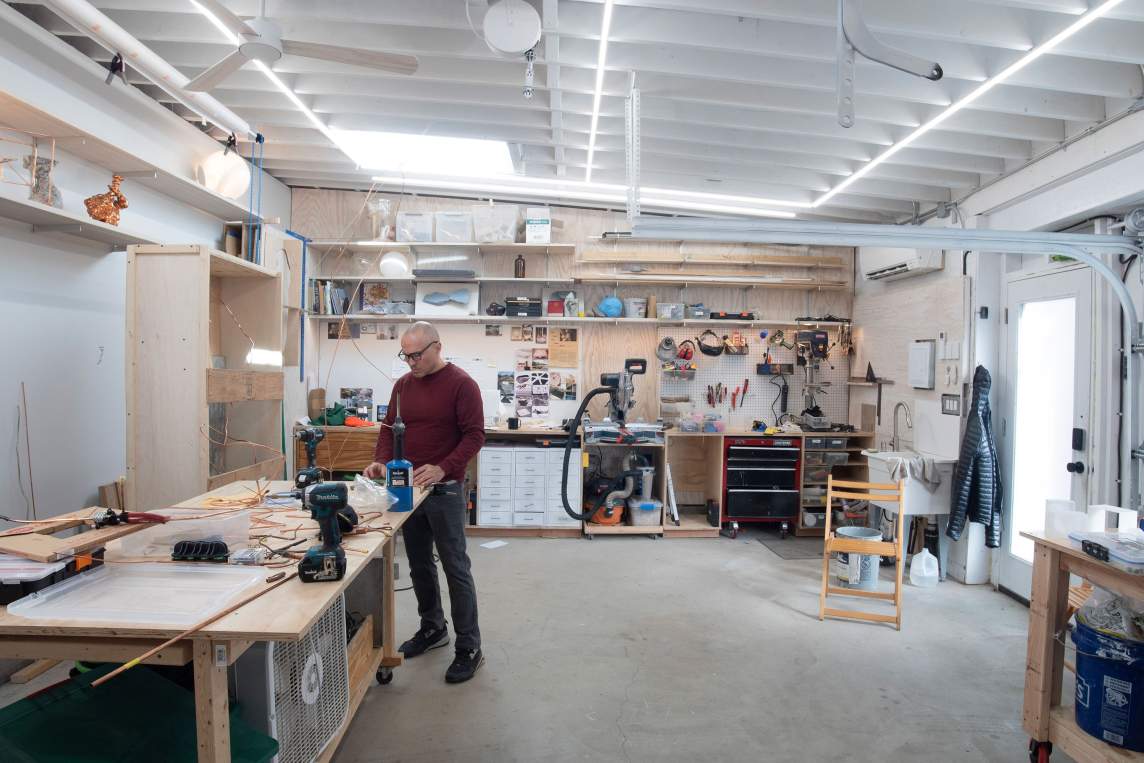
William Lamson is a Brooklyn-based interdisciplinary artist and a 2023 Joan Mitchell Fellow. We interviewed him about his work and creative practice in February 2024. The following is an edited transcript of that conversation.
I think about my work as a relational practice with materials and energy. I make a lot of different kinds of things—installations, sculptures, videos, and photographs—that all come out of an interest in engaging with forces and materials and systems. I often work with materials that are fragile or in flux, and the work ends up being a collaboration between something that I initiate and how the material reacts.
I think of the experience of walking into a slow moving river. You feel this push against you. You look down, you see the resulting effects of the current around your leg. I feel like I've constructed a practice that allows me to do that, that allows me to engage directly with some kind of energetic flow. It's exciting because it is bigger than me and it's out of my control. But I can really feel it.
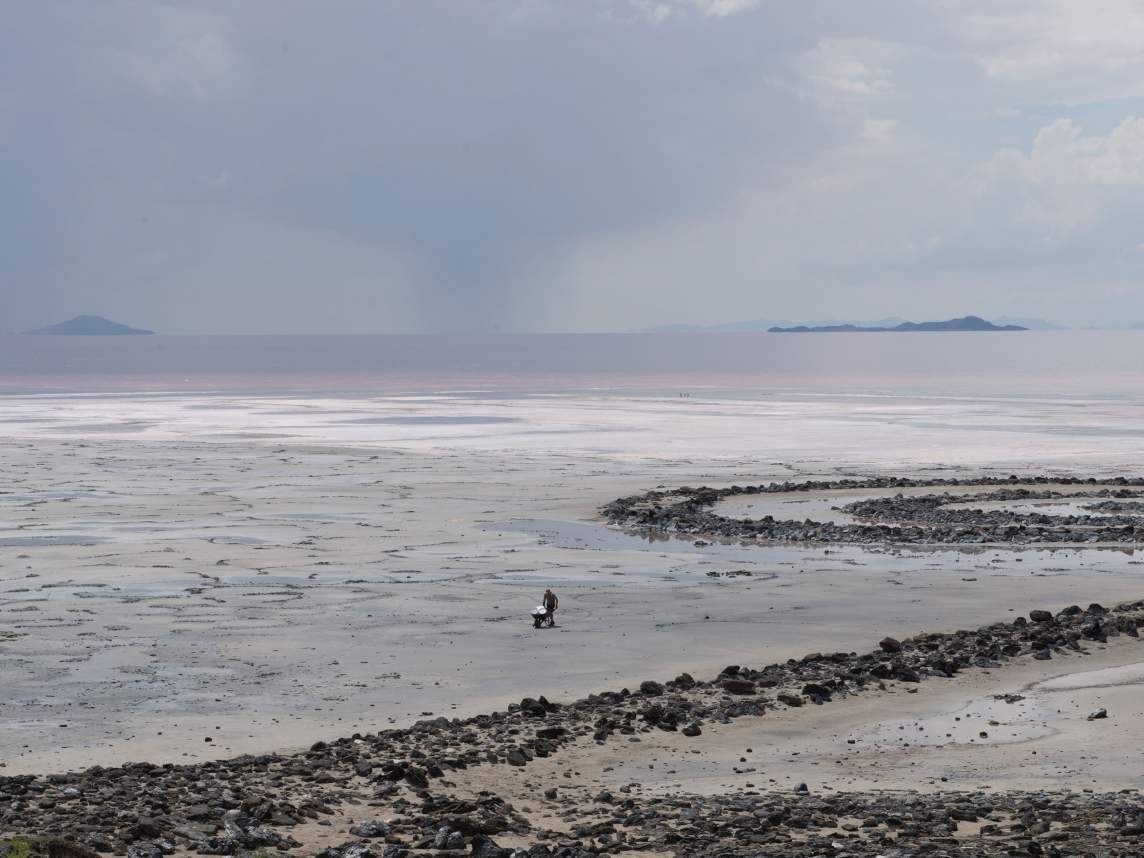
For a long time I looked at my work as being in direct conversation with artists who work in the landscape—not necessarily just land art, but a broader group of those artists. I would say that's still true, while also feeling that it's important to distinguish my practice from land art per se, because that has such a specific set of artists. But I really fell in love with movements that were happening almost at the same time, like Gutai or Mono-ha in Japan, but that aren't necessarily thought of when you think of land art. So I would say that my work comes out of an adjacency to these different groups that all work in the landscape.
I’m really lucky to have a garage behind my apartment in Brooklyn that I use as a studio. Last year, I finally turned it into a winterized working space, which is exciting for me because I haven't had a studio since before the pandemic. Because I make so many different kinds of things, I was really thinking, "Okay, how do I make a space that can support all these different kinds of materials and processes that I am interested in?" As I continue to build it out, I think about it like the kitchen of a little restaurant, where you have to have it dialed in, so that you can potentially turn into a dark room for a while or work with metal with wood. I need it to support a lot of different things.
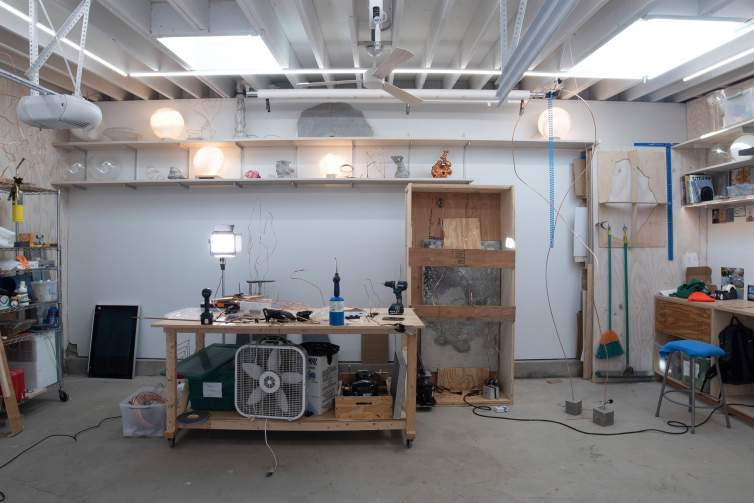
Some pieces come to me as ideas and are quite clear. And then the process is figuring out, "How do I do that?" Some pieces take years of just having an interest in something and seeing where it takes me. For example, what would happen if I filled a bunch of cups and vessels out in Utah with salt water and just left them in a room for six months? Both of these ways of working involve a lot of testing and seeing what the materials will do. Essentially, almost every work is a prototype.
For the experiment I just described in Utah, I wanted to see what happens when you leave the super salinated water from the Great Salt Lake in glass vessels for months. At the Center for Land Use Interpretation, they have these little studios where I could do just that, lock the door and leave. When I had someone check on it three months later, the salt had migrated out of the inside of these cups and enveloped the entire bowl and then continued up the walls of the room. It was like a living thing.
That experiment became the origin for a multi-year installation called Mineralogy, where I actually used pumps to keep adding water to this system to make a salt water irrigation of a domestic space. So I think a lot of the projects come out of just getting a hunch and trying something materially that maybe will lead to something else.
After making Mineralogy in Utah, and spending years developing this piece, I began to wonder, how quickly could these crystalline structures form? Could this happen on the timeline of a gallery exhibition schedule? Could I do it in a month?
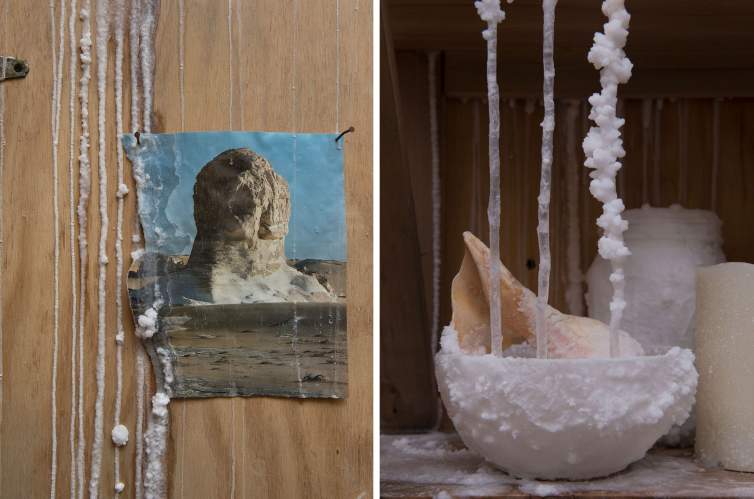
If you think of a gallery space as a room, having its own atmosphere, its own temperature, it was interesting to try and accelerate that process of months of slow crystallization through increasing the energy that affects these processes. In the case of a project called Badwater, which I did for the first time at Make Room Gallery in Los Angeles, it was really about bringing all of these same materials—salt water, different kinds of airflow, heat—into this gallery space to rapidly create these salt crystals that are descending and climbing different objects that I made for the purpose of having them interact with the salt.
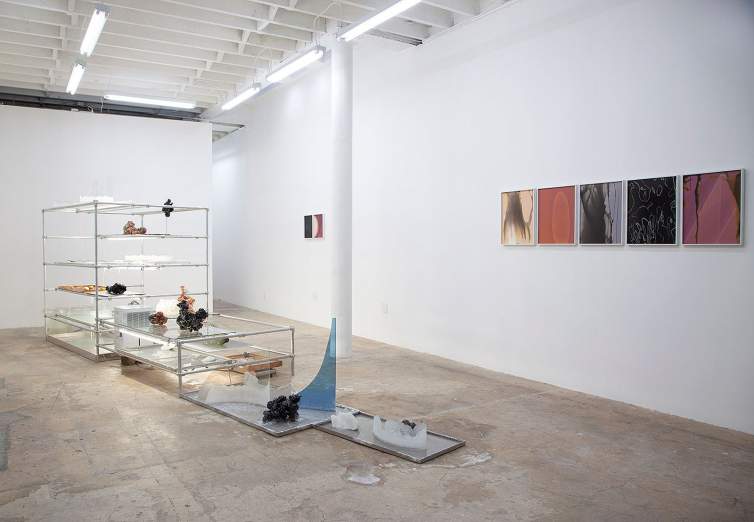
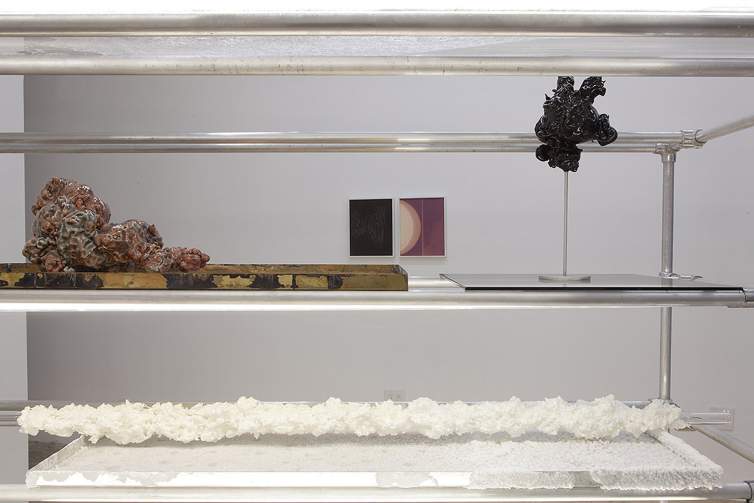
It’s really the idea of creating a microclimate. The gallery becomes an abiotic ecosystem with climate control devices—very low tech ones, just fans and pumps and timers—that create the infrastructure for all of this crystal growth that can happen really fast. I think that's what was so exciting to see happen in a gallery space.
Ideally, I really want viewers to have an expansive experience with the work, something that's very direct, but where they can move between the granular details of whatever’s happening inside a piece, while also having an expansive view of the system or the landscape. How can the work bring viewers into something close, but then also give them an experience of themselves in a bigger landscape or in a bigger context? That's what I hope people can get out of it.
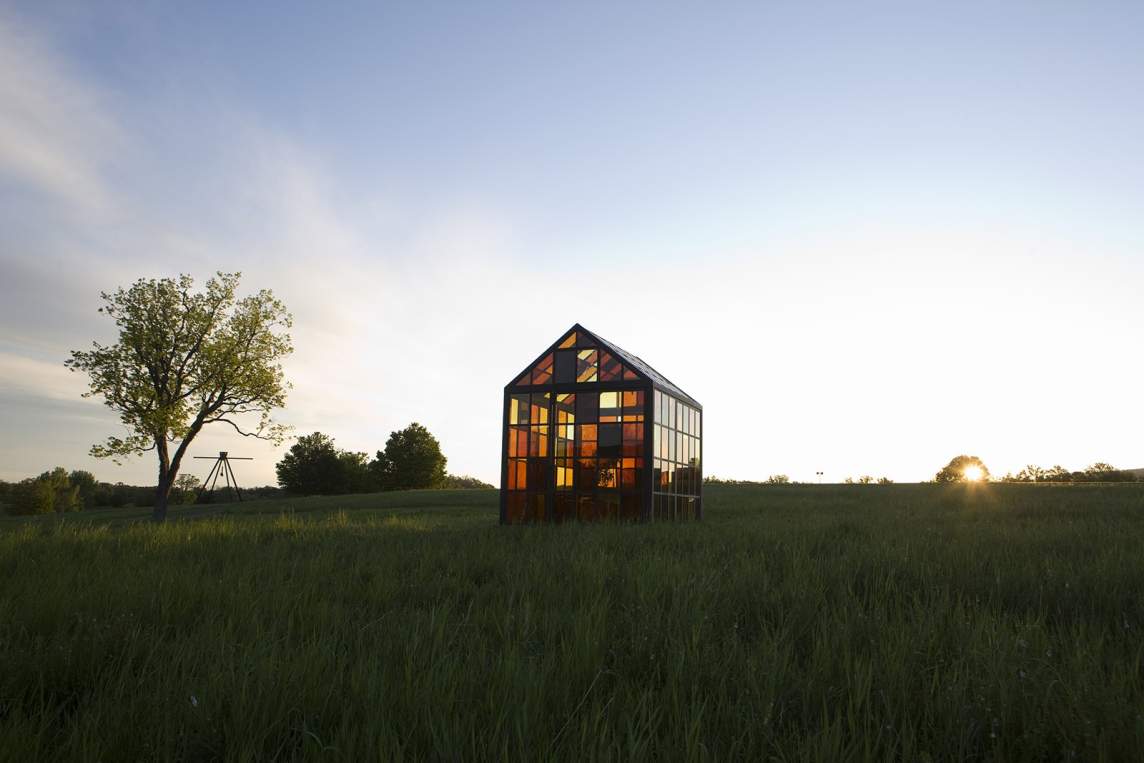
I made a piece called Solarium at Storm King that I think does this well. It’s a piece of architecture—a small glass house that looks exactly like a greenhouse, except all the panels are essentially a layer of glass, a layer of caramel sugar cooked to different temperatures, and then another layer of glass. With this project, it was fun to think about a greenhouse almost like a hybrid space, as both a reclusive space that looks a little bit like a mountain chapel or some other kind of contemplative space, and as an actual experimental space, where we can see what happens when sunlight passes through these yellowish and reddish panels. Will citrus trees that we put there grow?
What I loved about Solarium, and the way that it relates to my practice, is that it could be many things. The building reflected that in the architecture, where all of the doors could pivot open and it could become this open air pavilion. It was designed to be viewed from afar and also from within, where you can experience the unusual plays of light. I love that you can get right up to the glass and caramel panels and see all of this detail of sugar that's changing in the sun, but then you can also see through them to view the entire landscape at Storm King.
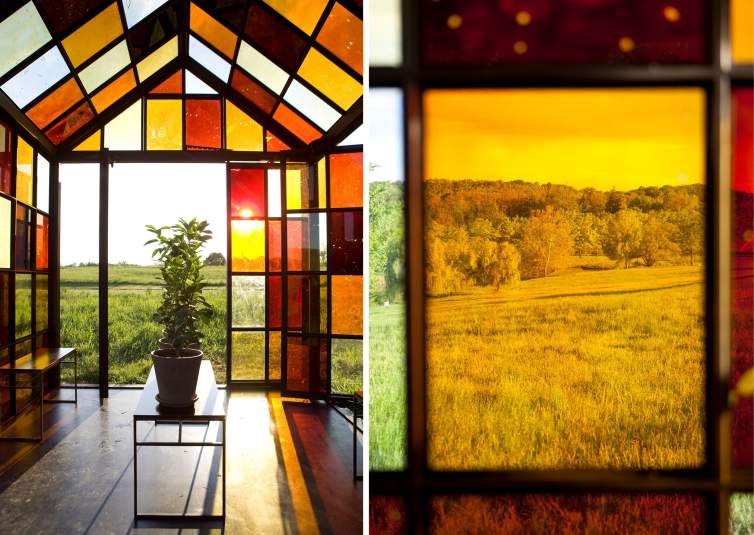
For me, this was such a great project because it really touched on materials, it touched on living systems, it touched on the landscape and the way humans connect to it, and to spiritual traditions of reclusive spaces designed for reflection. Like all of my work, it was a true experiment and unplanned things happened. Panels leaked, insects arrived. And yet, despite these challenges, I think it succeeded at giving the viewer the kind of experience that I had hoped for.
And that’s really the nature of my work. The projects are very labor-intensive because they start out one way and then they might turn into something different. For example, I just reinstalled a sculpture in a group show in Chelsea, which had stopped working the day the show began. It's called Thermal Fountain and it utilizes a refrigerator compressor that cools an exposed copper tube until the condensation becomes a thin layer of frost. As the timer turns on and off, it creates a cycle of freezing and thawing, pulling water out of the air and making this invisible thing visible.
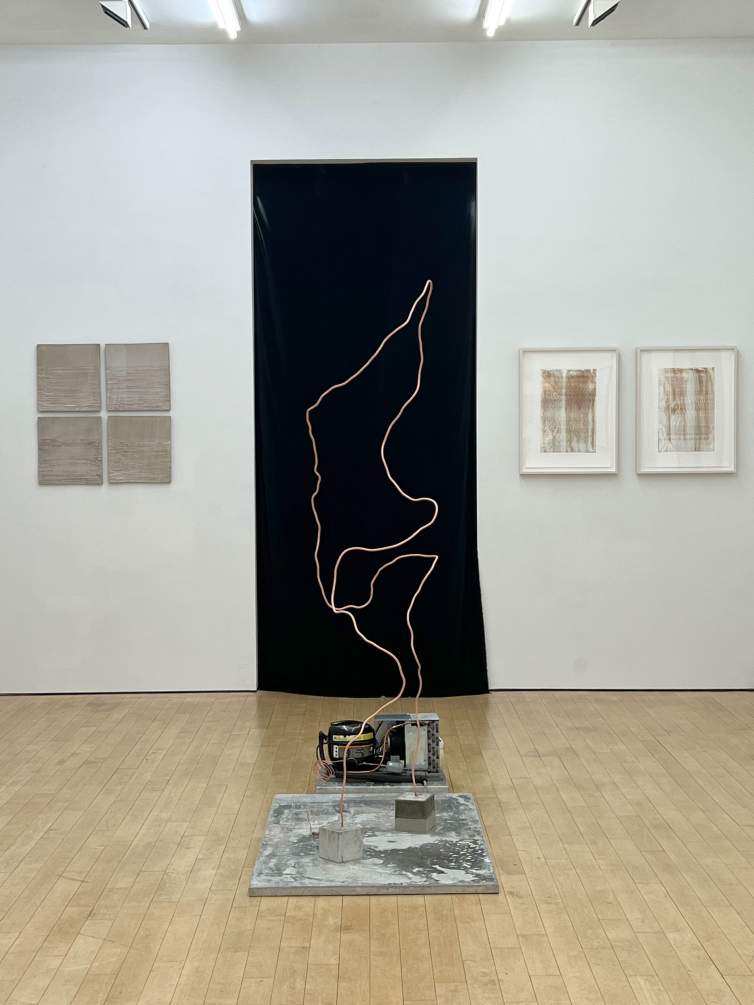
I'm not an engineer who designs refrigerators, so I made the original piece based on a working refrigerator that I took apart. However, as I rebuilt it, something was clearly different, causing the piece to stop working. In this way, it makes me think about all of these climate controlling machines that we have in our houses—they turn on to keep us comfortable, to preserve our food, but they are a bit like black boxes that we don’t think about until they stop working. I ended up just making an entirely new piece with the help of a refrigeration repairman, but this experience is a useful reminder to me of the limits of my own knowledge and what I can control.
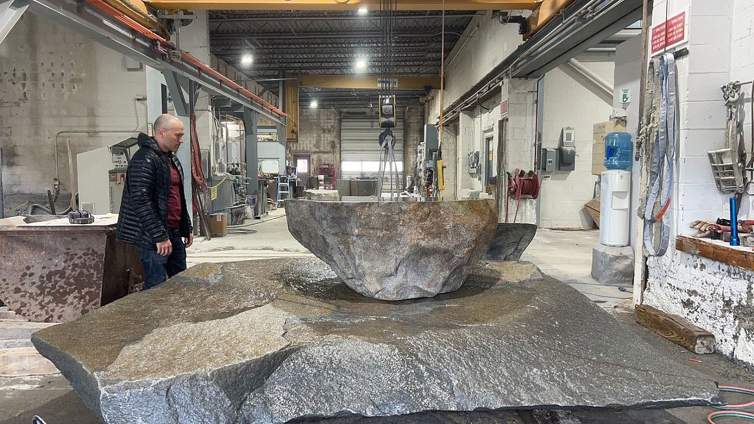
Right now, I’ve also been working on a public art project that I started three years ago for the Queens Botanical Garden. It's a project in stone, called Water Offering, that references non-Western sculptures that involve stone, water, and performance. Most fountains in western art are built around the illusion of an infinite supply of water. Instead, this is a dry rock sculpture that you bring water to and activate by pouring the water into carved channels.
The piece can be experienced as a dry sculpture, and as a participatory artwork. If they want to activate it, they get the experience of bringing water to it, deciding how much to pour out and at what rate. The piece gives viewers a much more direct experience with how water moves through a hydrological system than a recirculating fountain. My hope is that this process heightens their attention and appreciation for these materials.
The title and description of the piece reference the idea of making an offering, which is also foreign to a lot of Western audiences. We're so used to taking water access for granted, that it's easy to forget its vitality.
For the first time in my career, this project has given me the resources to work in stone, and that has been really exciting. Made of quarried granite and glacial erratic boulders, these pieces reference both the massive infrastructure built to support the inhabitants of New York City, and the largely invisible system of aquifers and groundwater reservoirs, both of which are used to irrigate the plants in this garden. One of the things I love about the experience of activating this piece is watching the water discolor the rock as it runs over the unfinished rock surface, darkening to reveal its mountainous topography and creating a real-time drawing.
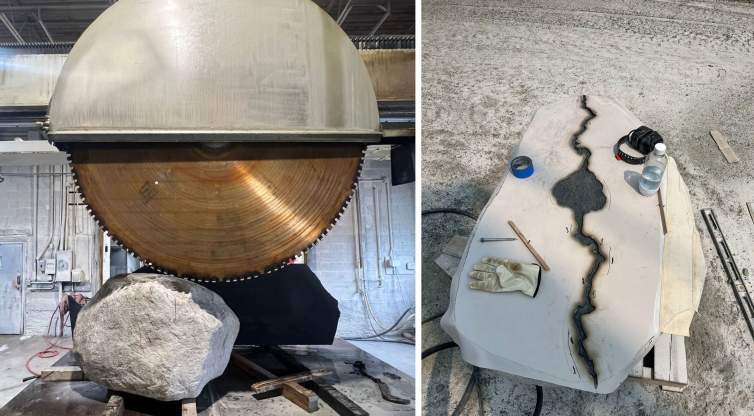
It was nice to think of this project in the context of it being made for a new education building—thinking about how the sculpture can be used by the education staff to talk about the entire water cycle or the hydrology of New York or any of the number of reservoirs that provide the water that we drink and water for the plants in the garden.
The other thing that has been new and exciting for me has been getting this fellowship and having an opportunity to take a sabbatical from teaching. Getting a chance to have a studio practice again, where I can explore different materials, is such an incredible gift. So that's really been my priority for this year.
Interview and editing by Jenny Gill. Learn more about William Lamson’s work at williamlamson.com and on Instagram.